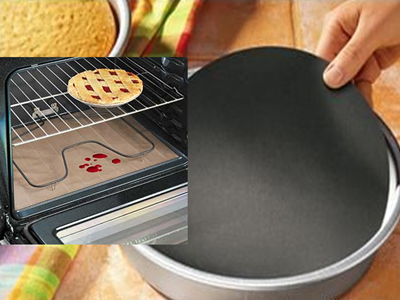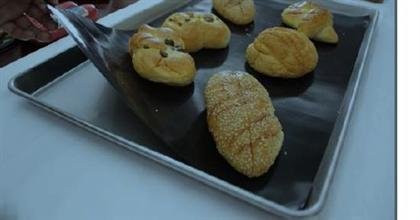 Smartphones and tablet terminals equipped with dual-core and quad-core processors have become a trend. How will the CPU core of the next-generation application processor develop? The UK ARM company, which has an absolute market share in the CPU core area, has disclosed the blueprint for multi-core technology development in the next few years. Its strategy is to use a combination of different sizes of cores, taking into account both high performance and low power consumption. Moreover, the combination of heterogeneous cores will become the basis for introducing virtualization technology in the mobile space.
Smartphones and tablet terminals equipped with dual-core and quad-core processors have become a trend. How will the CPU core of the next-generation application processor develop? The UK ARM company, which has an absolute market share in the CPU core area, has disclosed the blueprint for multi-core technology development in the next few years. Its strategy is to use a combination of different sizes of cores, taking into account both high performance and low power consumption. Moreover, the combination of heterogeneous cores will become the basis for introducing virtualization technology in the mobile space. Development of CPU cores for smartphones and tablet terminals The core "Cortex-A7" released by ARM in the UK in autumn 2011 is equipped with many peculiar features at first glance.
The Cortex-A7 is a CPU core for low-priced smartphones under $100. At the time of design, most attention was paid to the reduction of power consumption and cost, so its power efficiency was improved to about 5 times Note 1) compared to the existing ARM core CPU core "Cortex-A8" provided in Apple Inc.'s "iPhone 4".
Note 1) The numbers in the ARM Cortex family product name represent the relative performance of the CPU core. Instead of Apple's application processors "A4" and "A5", it represents the order of release and the product process.
The Cortex-A7 core completely implements "environmentally friendly operation" and is equipped with many advanced technologies and functions that are generally not required in the mobile field. Including virtualization technology, ECC function for main memory, and 40-bit physical address extension (LPAE: Large Physical Address Extensions).
Even if it is necessary to completely improve the power efficiency and reduce the circuit area, it is not necessary to include virtualization technology in the Cortex-A7 for low-priced smartphones. Why does ARM company have these functions in Cortex-A7 core?
The combination of high performance and low power consumption in the Cortex-A7 is accompanied by a large number of advanced features aimed at implementing a technology called “big.LITTLE†that combines high performance with low power consumption in future smartphones. These two completely opposite characteristics. This technology was introduced at the same time as ARM's Cortex-A7 release. It combines the Cortex-A7 core, which focuses on power efficiency, with the Cortex-A15, the highest-performance CPU core from ARM (see Figure 1). Just as literally, both "size" kernels with different performance are used at the same time.
Fig. 1: Smartphones will also use virtualization technology after 2013. The figure shows the ARM Cortex-A series of CPU cores, the number of cores used in smart phones and other portable terminals, and the types of cores. It was produced by this magazine based on the information of ARM.
The big.LITTLE technology dynamically separates the Cortex-A15 and Cortex-A7 depending on power and performance. For example, when the screen rendering of the browser requires high performance, the Cortex-A15, a CPU core with higher parallelism and longer pipelines, will run the application at a high speed. Conversely, when sending/receiving emails does not need to be too high performance, the Cortex-A15 will be turned off and the entire system will be transferred to a CPU core with a shorter pipeline and higher power efficiency – Cortex-A7 (Figure 2) Note 2 ).
Figure 2: Big.LITTLE Technology for Energy Saving through Heterogeneous Multi-Core ARM's big.LITTLE technology uses performance-focused “A15†and power-conscious “A7†CPU cores separately, thereby reducing power consumption. Electricity. When the CPU load is low, the entire system such as the OS is transferred to the A7 core, and the power of the A15 core (a, b) is cut off. It was produced by this magazine based on the information of ARM.
Note 2) The determination of when to transfer an application and OS to other cores is based on the same principle as “DVFS (Dynamic Voltage And Frequency Scaling)†that dynamically controls the operating frequency and power supply voltage of the CPU core. If the supply voltage and operating frequency of the Cortex-A15F are reduced to the lower limit, the Cortex-A7 is started and the system is transferred. Unable to see kernel switch from software. In addition, the big.LITTLE technology can realize the SMP utilization mode that continuously drives heterogeneous cores at the same time.
In the big.LITTLE technology, the power domains (regions) and transistors on the SoC used between the two cores are also different. The Cortex-A7's circuit area uses transistors with higher threshold voltages to reduce the operating current and leakage current by reducing the supply voltage. The Cortex-A15's circuit area uses transistors with lower threshold voltages to improve performance by increasing the supply voltage.
The architecture is fully compatible with big.LITTLE technology. To smoothly transfer software running on one core to other cores, the two CPU cores of the same size and the same architecture and functions are required.
Therefore, ARM Corporation makes the Cortex-A7 architecture fully compatible with the Cortex-A15. In addition to Cortex-A7's instruction set architecture (ISA) and Cortex-A15 are completely the same, the advanced features such as virtualization technology, ECC functions, and LPAE introduced to the ARM architecture for the first time in the Cortex-A15 have been ported directly to the low price. Bit Cortex-A7 smartphone. The Cortex-A7, which focuses on power efficiency, is equipped with many advanced features that are not needed at all, in order to implement the big.LITTLE technology.
YAXING utilize custom designed production processes for coating glass fabric and Kevlar fabric.PTFE coated glass fabric combines the properties of PTFE with the mechanical strength of glass cloth.
Properties:
·Outstanding temperature resistance
(from -170°C to +260°C)
·Excellent chemical resistance
·Superior non-stick surface, easy to clean
·High dielectric strength
·Dimensional stability
·Resistance to UV, IR and HF
·Non-toxic


PTFE Oven Liner,Fiber Glass Fabric,High Temperature Fabric Cloth, PTFE Coated Fiberglass Fabric
TAIZHOU YAXING PLASTIC INDUSTRY CO., LTD , https://www.yaxingptfe.com